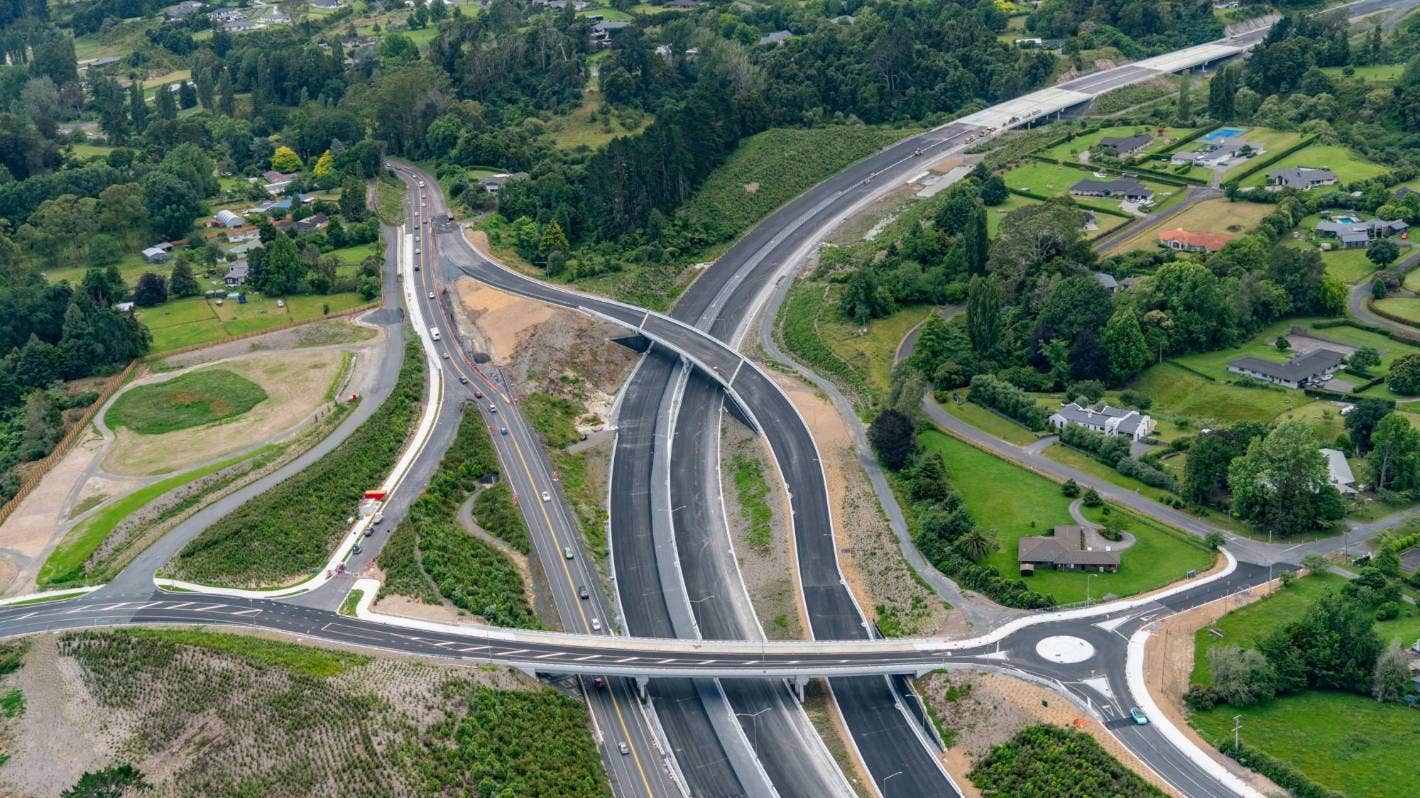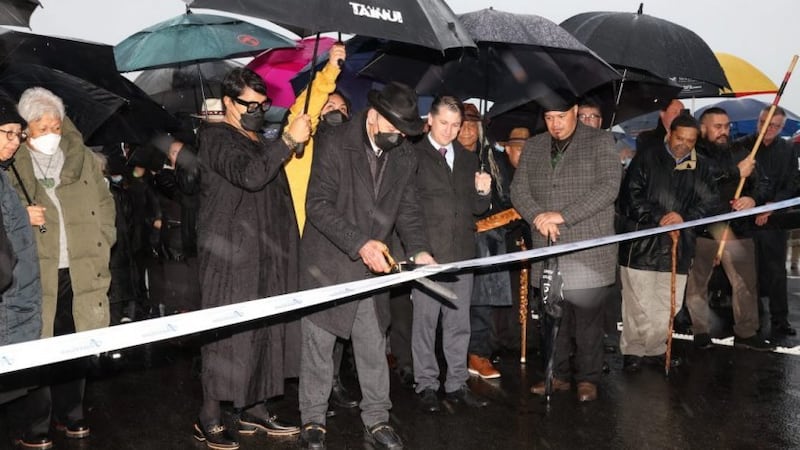Kingi Tuheitia and Transport Minister Michael Wood this morning cut the ribbon on the largest roading project in Waikato’s history.
More than 250 guests were in attendance for karakia and kapa haka in Kirikiriroa to celebrate the final 22km Hamilton section of the Waikato Expressway.
The Hamilton section is the final part of the four-laning of State Highway 1 between Bombay and south of Cambridge.
The full 102km expressway will reduce travel times between Auckland and Tirau by 35 minutes for approximately 20,000 vehicles a day; NZTA has set a higher speed limit of 110 km/h.
“This road has had its speed limit increased to 110km/hr because of its modern design and safety features. Less time spent in cars means more time spent with friends and family,” Waka Kotahi regional manager Jo Wilton said, at today’s celebrations.
Above: King Tūheitia and Transport Minister Michael Wood open the largest roading project in Waikato’s history.
Running from Ngāruawahia in the north to the Tamahere interchange south of Hamilton, the road connects Auckland to the agriculture and economic hubs of the Waikato.
“Today is a milestone moment for Hamilton. Thanks to the ongoing leadership of Waikato-Tainui and including members from, Ngāti Koroki Kahukura, Ngāti Hauaa, Ngāti Wairere and Ngāti Mahanga and local councils on the project. We couldn’t have built this without your support,” Wilton said.
Road users on the new route can survey whakairo by Māori artists, such as the giant poro takataka that dwarfs the Resolution Interchange, a tribute to tangata whenua’s kaitiaki of the land and aspirations for the future.

Waikato expressway interchange at Tamahere Picture / Waka Kotahi
Work on the earlier sections of the expressway began in the 1990s in Tamahere and Pōkeno and continued with Ōhinewai and Mercer in the 2000s; with the project spanning successive labour and national governments.
In 2009 the remaining seven sections were funded for construction with Te Rapa (opened 2012), Ngāruawahia (2013), Cambridge (2015), Rangiriri (2017), Longswamp (2020), Huntly (2020) and now Hamilton (2022).
The road traverses Hamilton’s gullies and estuaries – Mangaharakeke, Mangaone and Mangaonua– where Waka Kotahi has restored wildlife by planting natives and removing pests.
In total, over 860,000 species have been planted during the project.
The final section of the new route will be open to the public in "‘the coming days", Waka Kotahi (NZ Transport Agency) said in a statement.

